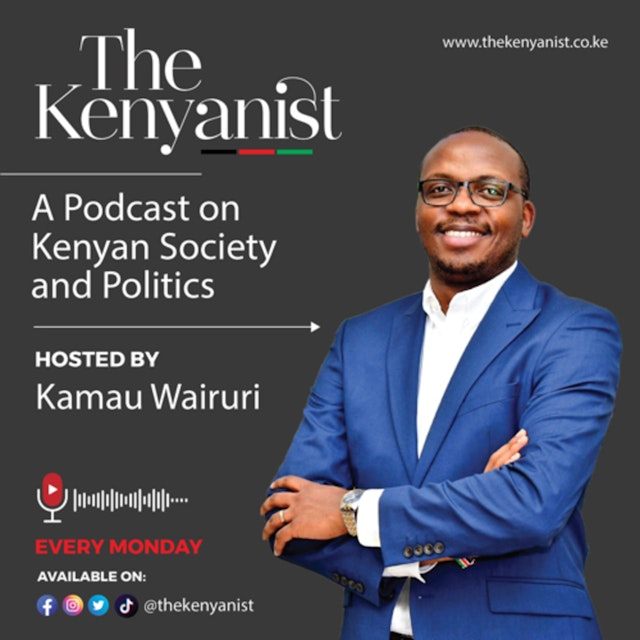In the first episode of The Kenyanist, Kamau Wairuri (host) talks to Melissa Wanjiru-Mwita, a lecturer in Spatial Planning at the Technical University of Kenya in Nairobi. Melissa argues that street names reflect what those in power want us to remember or forget.
In the first segment, we go back in time to trace the emergence of Nairobi City around the Railway Depot and how the streets were named. Noting that after Kenya became a Crown Colony in 1920, the British were more deliberate about naming the streets. One of the ways of claiming a space is to imprint a name on it. Melissa notes that the Africans were marginalised while some Asians got recognition.
In the second segment, we trace the renaming of the streets in Nairobi in the post-colonial period. We note that many streets took the names of Kenya (such as Dedan Kimathi and Harry Thuku) and African nationalists (such as Albert Luthuli and Kwame Nkrumah). However, many of the freedom fighters, including the Kapenguria 6 who had been detained by the colonial government were not honoured in this way. We also note that many streets were named after people who had close ties to Mzee Jomo Kenyatta, the first president of Kenya, even where their contribution to the struggle for independence may not be commensurate with the honour. We examine the politics of naming a street after Tom Mboya, the charismatic politician who was assassinated in Nairobi in 1969, especially the refusal to rename Government Road after him. The street was then renamed 'Moi Avenue' after Daniel arap Moi took over as the second President of Kenya. In this section, we also discuss the gender dynamics of street naming noting how women heroes of the liberation movement such as Field Marshall Muthoni Nyanjiru are not recognised.
In the third segment, we look at the contemporary period. We contrast the processes of renaming of streets in Nairobi after Prof Wangari Maathai and Wambui Kenyatta. We examine the more heated debates on the renaming of streets. We note that some renaming of street such as the renaming of Accra Road after Kenneth Matiba and Cross Street after Charles Rubia have been widely accepted. However, the renaming of a street after Fidel Odinga in Mombasa and Francis Atwoli in Nairobi have been met with resistance. Similarly, the failure of the County Government of Mombasa to rename the Mama Ngina Waterfront after Mekatilili wa Menza also raised some acrimony. the Melissa calls for a better legal framework to address the issues of street naming, including outlawing the naming of streets after a living person. She also calls for better recognition of women and go beyond politicians to also honour athletes and cultural icons.
Mentioned:
Melissa Wanjiru-Mwita. Nairobi’s street names reveal what those in power want to remember, or forget. The Conversation. (July 30, 2020). (02.09.2021)
Melissa Wanjiru. Street Toponymy and the Decolonisation of the Urban Landscape in Post-Colonial Nairobi, Journal of Cultural Geography, 34, 1 (2017), pp. 1-23.
In the first segment, we go back in time to trace the emergence of Nairobi City around the Railway Depot and how the streets were named. Noting that after Kenya became a Crown Colony in 1920, the British were more deliberate about naming the streets. One of the ways of claiming a space is to imprint a name on it. Melissa notes that the Africans were marginalised while some Asians got recognition.
In the second segment, we trace the renaming of the streets in Nairobi in the post-colonial period. We note that many streets took the names of Kenya (such as Dedan Kimathi and Harry Thuku) and African nationalists (such as Albert Luthuli and Kwame Nkrumah). However, many of the freedom fighters, including the Kapenguria 6 who had been detained by the colonial government were not honoured in this way. We also note that many streets were named after people who had close ties to Mzee Jomo Kenyatta, the first president of Kenya, even where their contribution to the struggle for independence may not be commensurate with the honour. We examine the politics of naming a street after Tom Mboya, the charismatic politician who was assassinated in Nairobi in 1969, especially the refusal to rename Government Road after him. The street was then renamed 'Moi Avenue' after Daniel arap Moi took over as the second President of Kenya. In this section, we also discuss the gender dynamics of street naming noting how women heroes of the liberation movement such as Field Marshall Muthoni Nyanjiru are not recognised.
In the third segment, we look at the contemporary period. We contrast the processes of renaming of streets in Nairobi after Prof Wangari Maathai and Wambui Kenyatta. We examine the more heated debates on the renaming of streets. We note that some renaming of street such as the renaming of Accra Road after Kenneth Matiba and Cross Street after Charles Rubia have been widely accepted. However, the renaming of a street after Fidel Odinga in Mombasa and Francis Atwoli in Nairobi have been met with resistance. Similarly, the failure of the County Government of Mombasa to rename the Mama Ngina Waterfront after Mekatilili wa Menza also raised some acrimony. the Melissa calls for a better legal framework to address the issues of street naming, including outlawing the naming of streets after a living person. She also calls for better recognition of women and go beyond politicians to also honour athletes and cultural icons.
Mentioned:
Melissa Wanjiru-Mwita. Nairobi’s street names reveal what those in power want to remember, or forget. The Conversation. (July 30, 2020). (02.09.2021)
Melissa Wanjiru. Street Toponymy and the Decolonisation of the Urban Landscape in Post-Colonial Nairobi, Journal of Cultural Geography, 34, 1 (2017), pp. 1-23.
The podcast The Kenyanist is embedded on this page from an open RSS feed. All files, descriptions, artwork and other metadata from the RSS-feed is the property of the podcast owner and not affiliated with or validated by Podplay.
